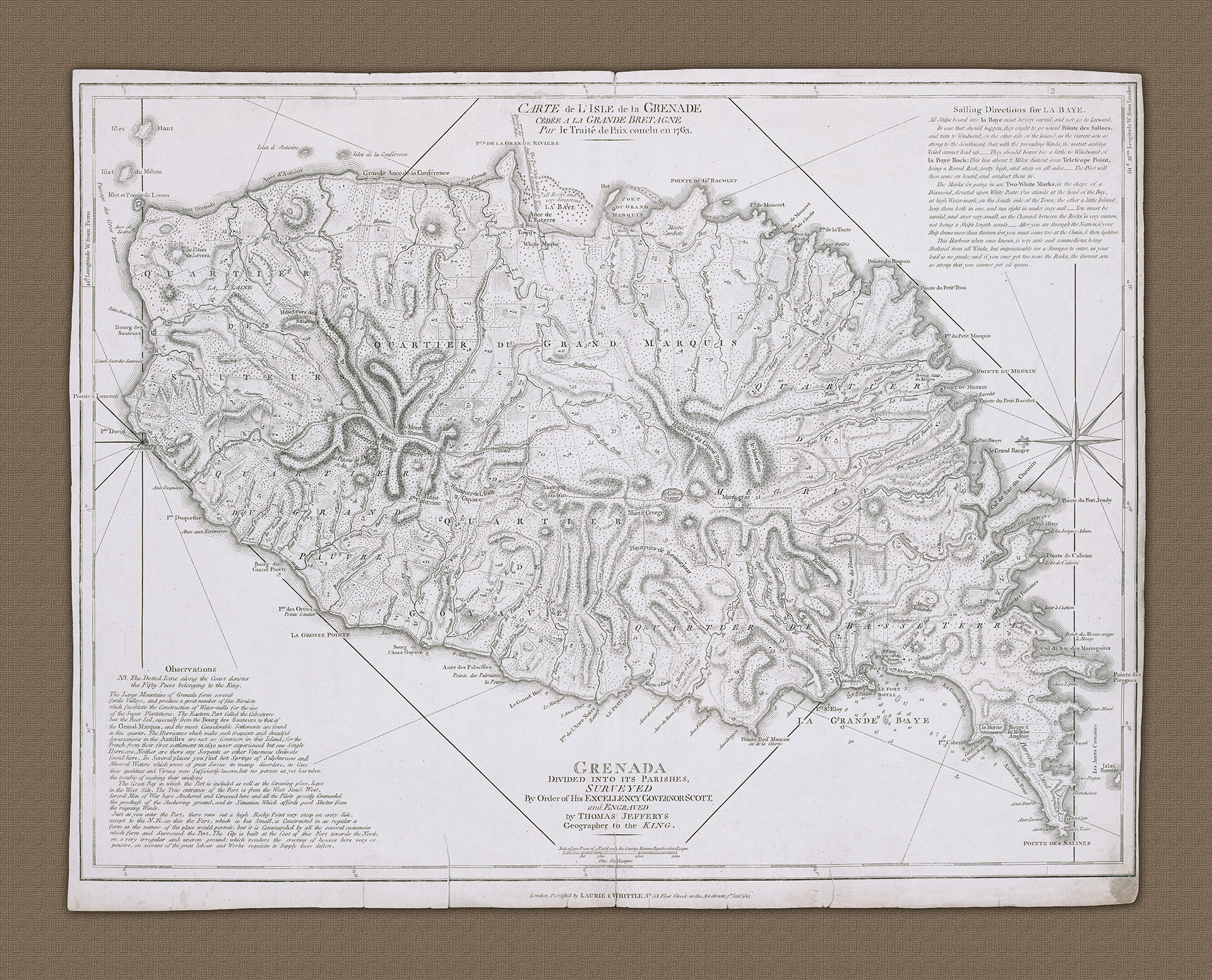A708 - Grenada
This detailed map of the Island of Grenada was produced by Thomas Jeffreys at the behest of the then Governor of the Island George Scott. It details this beautiful, commercially important, island both topographically and politically.
- 1801
- Thomas Jeffreys
- h22.5" x w27.5"
- L
The island's major product was, like many other Caribbean Islands, sugar and indigo but later in the 18th century it turned to the spices of nutmeg and mace. As with so many islands in the Caribbean Grenada was the subject of much commercial, political and military to-ing and fro-ing between Britain and France.
Having originally been settled by the French in 1649 Grenada was successfully invaded by the British in 1762 during the course of the Seven Years War (French/Indian war), it was officially ceded to British control in 1763 under the terms of settlement of the 1763 Treaty of Paris.
Since the British invasion 1762, George Scott had been acting as Governor of the island, a post he held until 1764. Throughout the years to follow the Island continued to change hands between the British and the French as it was taken back by the French in 1779 during the American Revolutionary war only to be reinstated to the British again under the terms of the Treaty of Versailles in 1783.
This detailed map was produced in 1802, just prior to the renewed declaration of war between Britain and France (resulting from the collapse of the Treaty of Amiens) in 1803, marking the start of the Napoleonic War which probably explains it's reissue.
As it was originally drawn in 1763 it is of little surprise that all of the place names are in French. Indeed the remnants of the French age are everywhere to be seen, almost as though this were actually a French map over which Jefferys has engraved British interests - note the cartouche on the top of the map which declares that this is a map of the Island as it was in 1763 at the time it was ceded to Great Britain.
Thomas Jeffery's contribution seems to have been to add 'Parishes' to the map and to translate or add observations and sailing directions along with various strategic military dispositions. His observations include a good deal of information as to living conditions on the island at the time. Note also the sailing directions and the 'Passage for large ships' and the two 'White Marks' to lead ships in on the line between the rocks into the 'La Bay'.
Every historic chart has a personal story to tell and one of them behind this is that of Governor George Scott, who having been part of the British assault on the Island in 1762 with the British was left installed as Governor by Major-General Richard Mockton, to whom Scott was Godfather to Monckton's illegitimate daughter. In 1774 Scott left Grenada to become Lieutenant-Governor of Dominica but not before he had written his will which reveals that he had substantial land-holdings on Grenada. In a codicil to the will in 1767 Scott added that he had been 'grossly insulted' by one Alexander Campbell and was determined to 'meet him' the following morning. As no more is known of George Scott he presumably failed to draw satisfaction from Mr Campbell and died.
- Grenada


